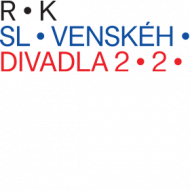
The History of Slovak Theatre – 11. Puppet Theatre
Over the seventy years of its existence the professional Slovak puppetry has undergone development, resulting in the full integration of its unique creative outputs among the other theatre terms in Slovakia. The development of amateur puppet theatre in Slovakia in the first half of the 20th century was shaped by the shared cultural and social background of the Czechoslovak Republic and the tradition of the traveling puppeteers of the 19th century. The pioneer of the Slovak traveling puppeteers was Ján Stražan. At the turn of the 20th century, the world of Slovak puppetry grew with the
addition of the Dubský and Anderle families.
In the 1950s, professional puppet theatres slowly started to emerge. Initially they were an administrative part of the regional theatres, and only gradually they were becoming independent. Their formation was closely connected to the active work of amateur puppeteers. Already at that time, many of them used the non-traditional or modern expressive means. The first to arrive was the Puppet Theatre Žilina (1950), another one was termed in Nitra (1951, today Old Theatre of Karol Spišák), in Bratislava (1957, today Bratislava Puppet Theatre), Puppet Theatre in Košice (1959) and in Banská Bystrica (1960, today Puppet Theatre At the Crossroads). Over the following decades, the professional puppet theatres wrote their own original puppet plays (Ján Romanovský, Ján Ozábal, Ľubomír Feldek, Jozef Mokoš, Ján Uličiansky), and in addition to children they started to speak to adult audiences using a variety of types of puppets, gradually shifting to open manipulation, which, in addition to anti-illusion, is dominated by playfulness, metaphor and the partnership relation of the actor and the puppet. These theatres employed prominent directors (Ján Romanovský, Bohdan Slavík, Karel Brožek, Vladimír Predmerský, Milan Tomášek, Bedřich Svatoň, Ján Hižnay, Ján Uličiansky, Ľubomír Vajdička, Jozef Bednárik and others) and set designers (Jana
Pogorielová, Hana Cigánová, Eva Farkašová, Ján Zavarský, Peter Čisárik, Miroslav Duša and others).
An important change in the development of the Slovak theatre occurred after 1989. This time period led to the official establishment of private puppet theatres. They were founded by the graduates of the Prague Academy of Performing Arts, College of Theatre, majoring in puppetry and later also of the Bratislava Academy of Performing Arts, Department of Puppetry. Blending of forms and genres gave birth to syncretic plays with overlapping elements and processes of various theatre forms (pantomime, puppetry, dance and movement theatre). Independent theatres also brought the revival of traditional puppetry craft with its ancient techniques and topics, often transformed into updated frameworks. Together with the establishment of the five public (self-governing) theatres, independent theatres enrich the Slovak puppetry with diverse genres, literary management and plays.
This is an online version of exhibition theatre.sk.


